![A transport of Jewish prisoners marches through the snow from the Bauschovitz train station to Theresienstadt. [LCID: 69720]](https://encyclopedia.ushmm.org/images/large/781755a6-1ba5-4d8e-8b2b-9f25bdf3687f.jpg)
Browse an alphabetical list of film clips that feature important events before, during, and after the Holocaust and World War II. These clips include home movies, propaganda films, newsreels, and more.
<< Previous | Displaying results 1-14 of 14 for "Film" | Next >>
Upon arrival in the Auschwitz camp, victims were forced to hand over all their belongings. Inmates' belongings were routinely packed and shipped to Germany for distribution to civilians or use by German industry. The Auschwitz camp was liberated in January 1945. This Soviet military footage shows civilians and Soviet soldiers sifting through possessions of people deported to the Auschwitz killing center.
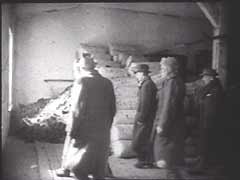
Soviet military footage showing children who were liberated at Auschwitz by the Soviet army in January 1945.
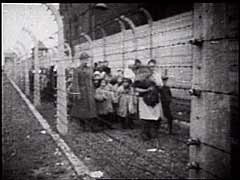
Soviet troops entered the Auschwitz killing center in January 1945 and liberated thousands of sick and exhausted prisoners. This Soviet military footage was filmed shortly after the camp was liberated. It shows Soviet doctors examining victims of sterilization, poisonous injection, and skin graft experiments.
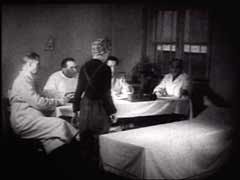
After British soldiers liberated the Bergen-Belsen concentration camp in Germany, they forced the remaining SS guards to help bury the dead. Here, survivors of the camp taunt their former tormentors, who prepare to bury victims in a mass grave.
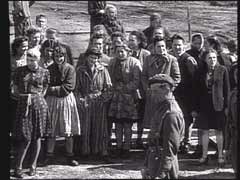
The US army filmed the weak and emaciated survivors of the Buchenwald concentration camp in Germany to document Nazi crimes against humanity. This film was shot shortly after the liberation of the camp in April 1945.
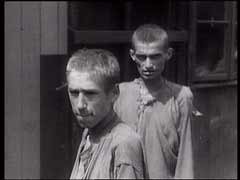
The Dachau concentration camp, northwest of Munich, Germany, was the first regular concentration camp the Nazis established in 1933. About twelve years later, on April 29, 1945, US armed forces liberated the camp. There were about 30,000 starving prisoners in the camp at the time. Here, soldiers of the US Seventh Army document conditions in the camp. They also require German civilians to tour the camp and confront Nazi atrocities.
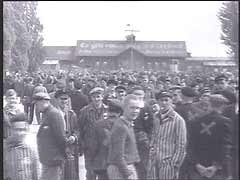
US forces liberated the Dora-Mittelbau (Nordhausen) concentration camp in April 1945. Here, medics and soldiers of the US 3rd Armored Division evacuate sick and dying survivors of the camp.
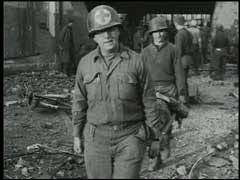
US forces under the command of General Omar Bradley reached the Ebensee forced-labor camp in Austria in early May 1945. The Germans had built Ebensee at the foot of the Austrian Alps as part of the Mauthausen system of camps. The Nazis employed Ebensee prisoners as forced laborers during the construction of an underground rocket factory. Thousands died from the harsh conditions and back-breaking labor.
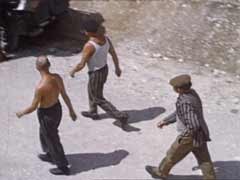
In July 1944, Soviet forces liberated the Lublin/Majdanek concentration camp. The Polish-Soviet Nazi Crimes Investigation Commission, established to document Nazi atrocities committed during the German occupation of Poland, ordered exhumations at Majdanek as part of its efforts to investigate Nazi mass killings in the camp. The commission later published its findings in Moscow on September 16, 1944, in Polish, Russian, English, and French.
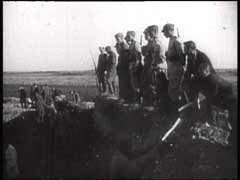
The Mauthausen concentration camp was established shortly after the German annexation of Austria (1938). Prisoners in the camp were forced to perform crushing labor in a nearby stone quarry and, later, to construct subterranean tunnels for rocket assembly factories. US forces liberated the camp in May 1945. In this footage, starving survivors of the Mauthausen concentration camp eat soup and scramble for potatoes.
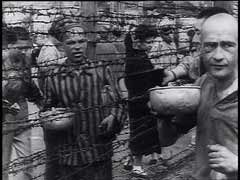
This film footage is excerpted from documentary film titled "Mauthausen Concentration Camp," showing footage from both Mauthausen and the nearby Gusen camp. Filmed by US cameramen, the footage opens with a broad view of buildings in the Gusen camp. Excerpts that follow show scenes in the camps, American care of the liberated prisoners, and Austrian civilians loading bodies of victims onto carts for burial.
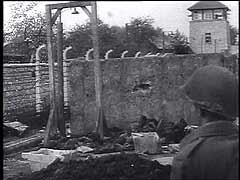
General Dwight D. Eisenhower and other American officers inspect conditions in the Ohrdruf concentration camp shortly after the liberation of the camp. As American forces had approached, SS camp guards shot the remaining prisoners before abandoning the camp. Confirmation of such atrocities prompted the US military to require Nazis and local German civilians to view the camps.
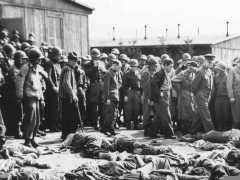
After Italy's armistice with the Allies in September 1943, the Italian army disintegrated. The country was divided between German forces holding the northern and central regions (including Rome) and Allied forces in the south. After nine months of bitter combat, Allied forces—specifically the US Fifth Army—liberated Rome in June 1944. This footage shows scenes of celebration as troops move through Rome. It ends with a prayer by Pius XII (pope, 1939–1958).
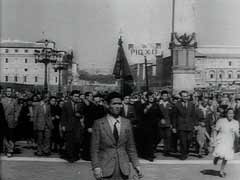
The German army occupied Lodz, Poland, in September 1939. From early February 1940, Jews in Lodz were forced to move to a designated ghetto area, which was sealed on April 30, 1940. This German footage illustrates conditions during winter in the Lodz ghetto. Winter in the ghettos aggravated existing hardships, depleting already sparse supplies of food and fuel.
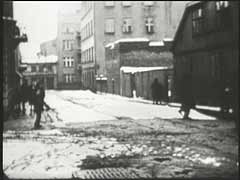
We would like to thank Crown Family Philanthropies, Abe and Ida Cooper Foundation, the Claims Conference, EVZ, and BMF for supporting the ongoing work to create content and resources for the Holocaust Encyclopedia. View the list of donor acknowledgement.